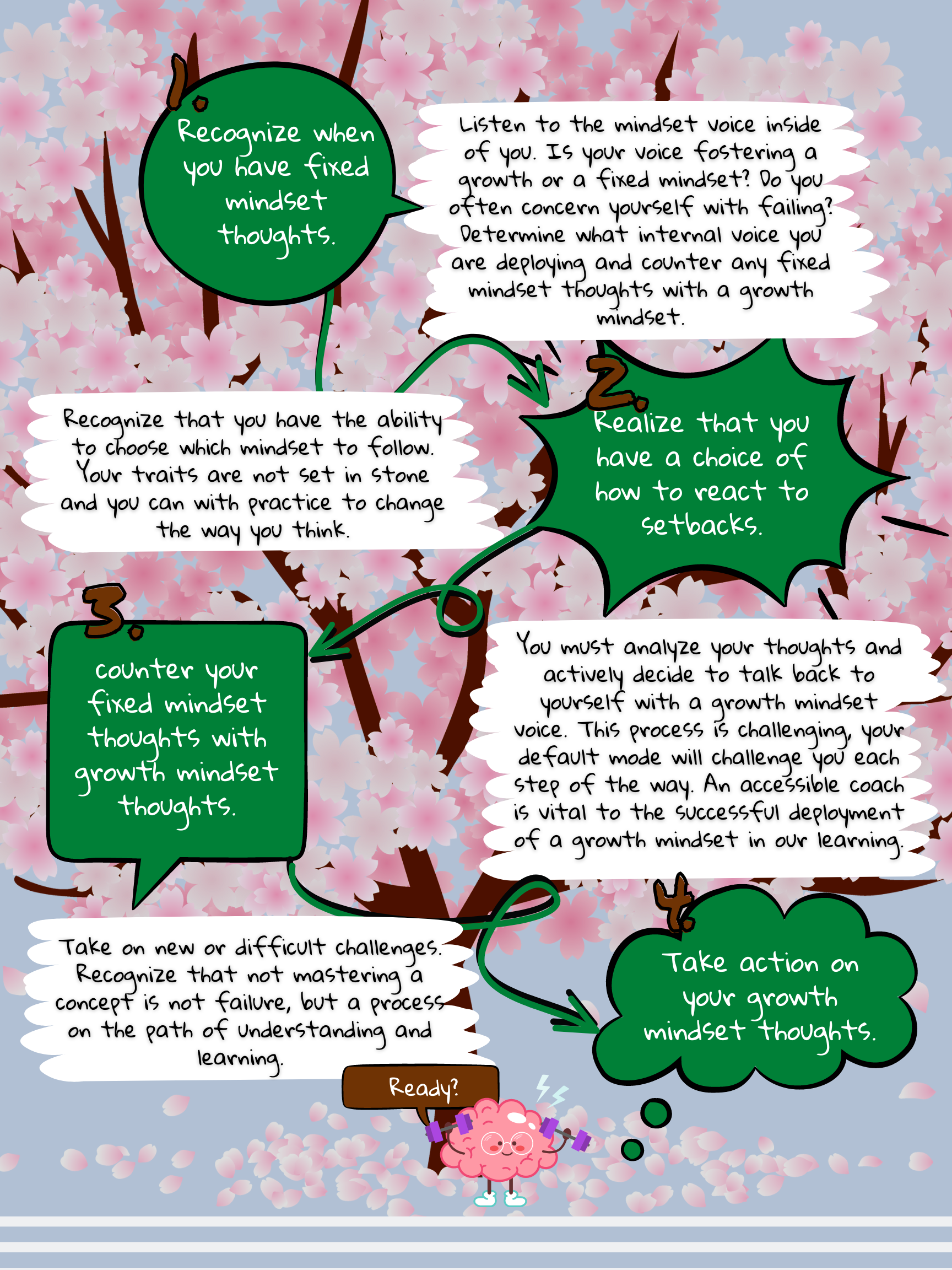
A Plan in Action

A growth mindset is the understanding that success comes from time and effort rather than some innate ability. Growth mindset is contrasted against the fixed mindset that believes a person has innate ability that is unchanging (Dweck 2008). The vast majority of people have a mixed mindset, with many leaning to one side or the other. The most important reason to study these mindsets is to understand that through practice a person has the ability to learn to think in a growth mindset and they can accomplish tasks with effort and perseverance. This is why the concept of “not yet” is so important. A person who thinks in a growth mindset knows they can achieve their goals and setbacks are met with the idea of “I have not mastered this yet” instead of a fixed mindset that would not have even tried or given up as soon as it got too hard.

The long process of changing one’s own mindset must be understood before anyone can properly implement the plan. The biggest pitfall on our road to change, is not accidentally using the wrong mindset, but believing you are using a growth mindset when you are really using a fixed one (Dweck 2020). This means that you have to actively acknowledge that your mindset will take time to change and not to feel that failure means you cannot change. Educators that use the following these steps will avoid a false growth mindset.



1. Listen to the mindset voice inside of you: Is your voice fostering a growth or a fixed mindset. Do you often concern yourself with failing? Realize what internal voice you are deploying and counter any fixed mindset thoughts with a growth mindset.
2. Recognize that you have a choice: You have the ability to choose which mindset to follow.
3. Talk back with a growth mindset voice: You must analyze your thoughts and actively decide to talk back with a growth mindset.
4. Practice: Take on new or difficult challenges. Do not back down from the learner who wants to disengage, but use your growth mindset to motivate them.
5. Find outside help: This process is challenging, your default mode will challenge you each step of the way. An accessible coach is vital to the successful deployment of a growth mindset in our learning.
6. Stop seeking approval from others: Comparing yourself to others focuses you on a fixed mindset. Stop worrying about what others are saying and use the opportunity as a motivation to grow.
7. Embrace the “yet” not the failure: Recognize that not mastering a concept is not failure, but a process on the path of understanding and learning. This is not a copout statement, if the learner fails to understand the concept do not say good effort and move on. Make a plan to help the learner master the task.
8. Take a growth mindset action: This is a process and like any skill you must work on mastering that skill. This requires an active engagement on your part to master the skills required to move into a growth mindset. Turn setbacks in your thinking process as an opportunity to learn how to deploy the growth mindset.
These steps require mastery, and are a work-in-progress for most people. According to Carol Dweck this could take a lifetime to master. As educators redeploy this method, they must do so with the realization that a growth mindset is something you want to achieve but a fixed mindset is always lurking around the corner to spoil your thoughts.
References:
Dweck, C. (2020, December 2). Carol Dweck revisits the ‘growth mindset’ (opinion). Education Week. Retrieved November 4, 2022, from http://www.edweek.org/ew/articles/2015/09/23/carol-dweck-revisits-the-growth-mindset.html
Dweck, C. S. (2008). Mindset: The New Psychology of Success. Ballantine Books.





